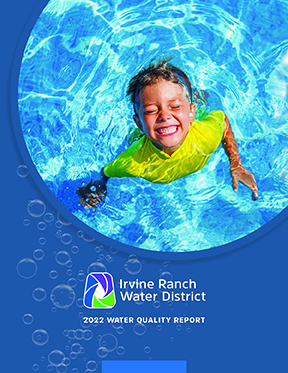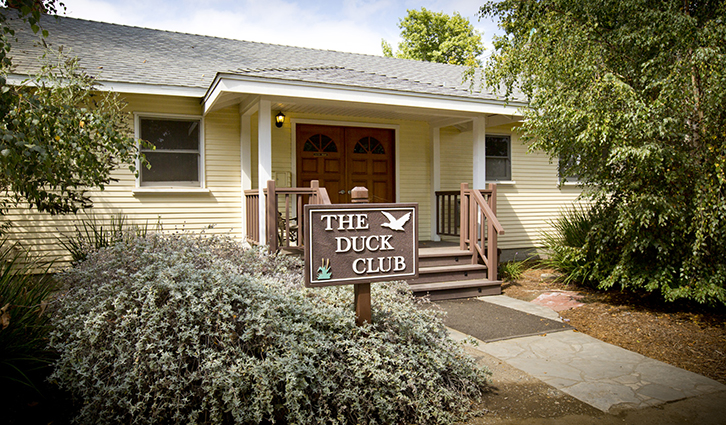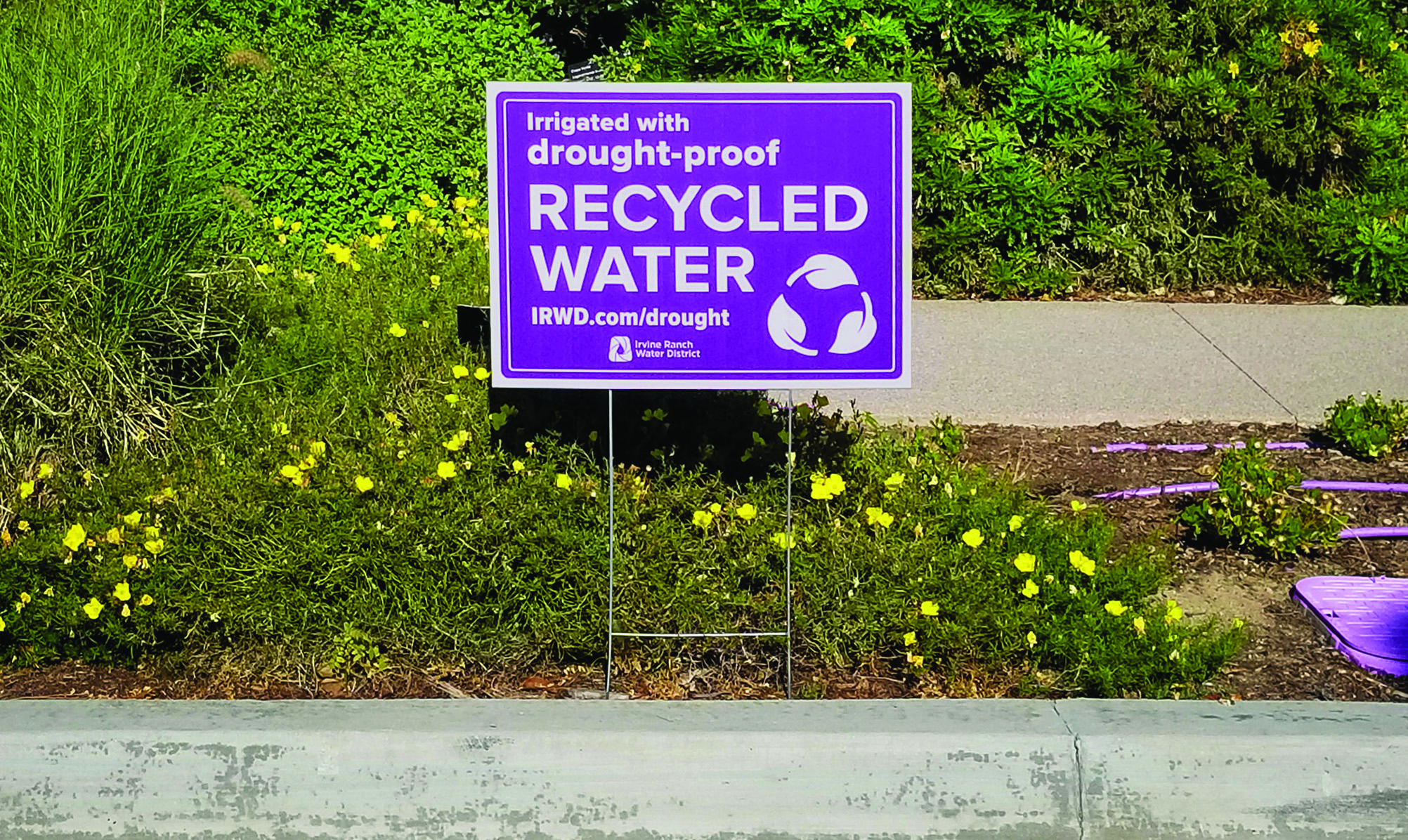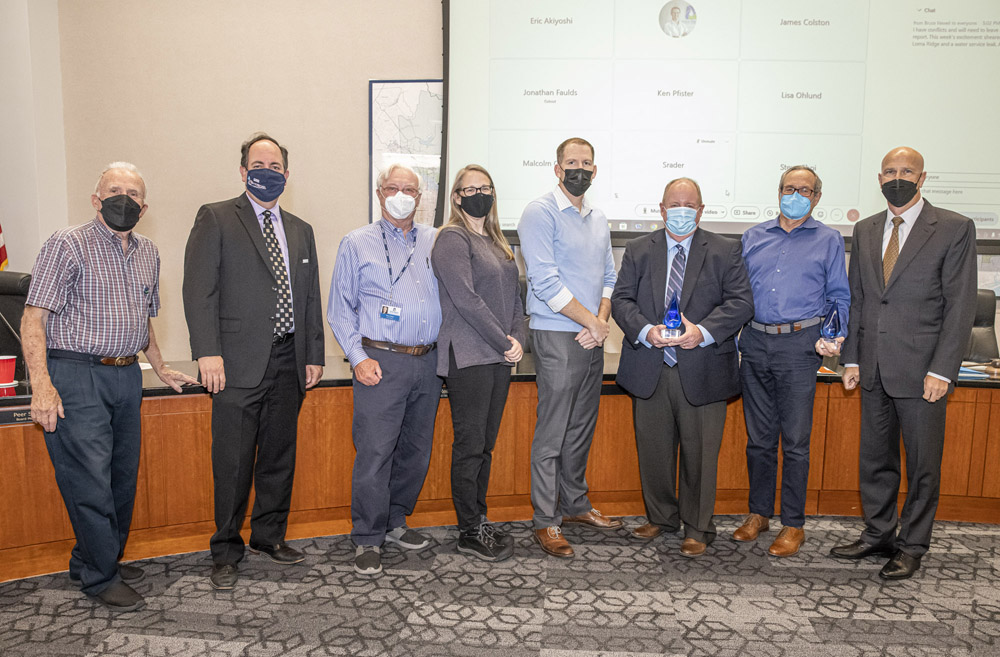Drink up! IRWD water meets all of the exacting standards set by the state and federal governments. Learn more in the 2022 Water Quality Report, available here. To request that a paper copy be mailed to you, email info@IRWD.com with the subject line “Water Quality Report” or call 949-453-5500.
At IRWD, everything we do is aimed at providing our customers with the highest-quality water possible. Our Water Quality staff continuously monitors the supply, conducting more than a quarter of a million laboratory tests each year on water taken from more than 100 routine sample points. We are proud to have a state-of-the-art and state-certified Water Quality Laboratory. IRWD's commitment to innovation makes it one of the best-equipped water labs in Southern California.
If you have questions or concerns regarding water quality issues — such as taste, odor or appearance — please review the frequently asked questions below or contact our Customer Service specialists at 949-453-5300 or customerservice@IRWD.com.
Questions about Portola High School and IRWD Recycled Water?+
On May 19 the California Department of Toxic Substances Control(DTSC) issued a final report. Page 32 of the final report contains the statement that: "low concentrations of some of the VOCs detected in the soil gas samples including chloroform and dibromochloromethane may be a result of the chlorination of the recycled water."
Chloroform and dibromochloromethane are common, regulated constituents that can be produced during the water disinfection process, and trace levels could be present in IRWD's recycled water. These low levels are well within the stringent limitations established by the California State Water Resources Control Board for safe water reuse under Title 22 of the California Code of Regulation. IRWD recycled water is rigorously monitored and consistently remains within these standards.
IRWD recycled water is safe for all permitted uses and applications.
Why does my water sometimes look cloudy?+
Tap water can sometimes appear cloudy and this is often mistaken for an impurity in the water. Cloudy water, also commonly described as milky white, hazy, soapy or foamy, is usually caused by air in the water. This can occur naturally and is caused by dissolved air in the water that is released when the faucet is opened. When you relieve the pressure by opening the faucet and fill your glass with water, the air is now free to escpae from the water. Because cold water holds more air than warm water, small bubbles will appear in water that is heated or depressurized, because this reduces how much dissolved gas the water can hold. The presence of air can sometimes be traced to pipeline or pump repair too.
Suggestion: To see if the white color in the water is due to air, fill a clear glass with water and set it on the counter. Observe the glass of water for two or three minutes. If the white color is due to air, the water will begin to clear at the bottom of the glass first and then gradually will clear all the way to the top. If the cloudiness doe not clear after five minutes, call IRWD at 949-453-5300.
Why does my water taste or smell different during different times of the year?+
Unlike many areas of Orange County, IRWD is not dependent upon only one source of water. Approximately 65 percent of our total domestic water supply is local groundwater pumped from wells within the Orange County Groundwater Basin. The remaining 35 percent of our water supply is imported water which must be purchased from the Metropolitan Water District of Southern California (MWD). Note: some areas of the District such as Lake Forest and Newport Coast receive mostly MWD water all year-round.
MWD imports water from the Colorado River via the Colorado River Aqueduct and from Northern California via the California Aqueduct, also known as the State Water Project. IRWD generally uses water from the Colorado River, Northern California and local wells and the mix varies throughout the year. Imported water is treated at MWD's Diemer Filtration Plant in Yorba Linda using chloramines, a combination of chlorine and ammonia. IRWD also uses chloramines to treat your well water as it enters the distribution system. Generally, using this combination results in less chlorine taste and odor. Because your water sources may vary or be made up of a blending of these various types of water, you may notice a difference in the taste or hardness (mineral content) of the water at different times of year. None of these factors affect the safety of your water.Having multiple sources of water is beneficial for IRWD customers. Local groundwater is both high in quality and lower in cost than imported water which must travel hundreds of miles through aqueduct systems. Having more than one source also improves the overall reliability of our water supply.
Do I need bottled or filtered water for safety?+
Absolutely not! Bottled water and tap water are regulated by different agencies. Tap water actually has more stringent reporting requirements, such as providing customers with a printed water quality report each year. Bottled water suppliers are not required to provide such data, but some may do so on request. The water provided to you by IRWD is clean, pure and ready to drink at a fraction of the cost of bottled water.Before choosing an alternative to tap water, compare data contained in the IRWD Annual Water Quality Report with water quality data from the bottled water or filtration device you are considering. The decision to use bottled water or a filtration system should be based on taste or other aesthetic considerations, not on fear of health risks.
Do I have hard water?+
The answer to that question is "yes and no" because the degree of hardness varies depending upon the time of year and your location within the District. Water hardness refers to the mineral content in the water and is commonly expressed in "grains" of hardness. Generally water with 10 grains or more is considered "hard." Water imported from the Colorado River and Northern California is typically hard, while IRWD's well water is moderately hard. Water from the former Santiago County Water District local sources is also hard. For specific hardness levels for each source, please refer to the current Water Quality Report.
While the hardness of the water does not affect its safety, the higher mineral content can cause white spots on glasses in the dishwasher. IRWD generally uses water from the Colorado River, Northern California and local wells. Water use is alternated throughout the year. Because water is blended from a variety of sources, you may notice spotting on glassware more during the winter. IRWD customers who live in Lake Forest and Newport Coast receive mostly all imported water year-round and therefore have more consistently hard water.
It is best to read the owner's manual for your dishwasher and follow the manufacturer's recommendations regarding settings for hard water. Some other tips that may help reduce spotting include using hotter water, varying the brand and type of rinse agent and detergent, and adding white vinegar to the rinse cycle of the dishwasher.
What type of water softener should I use?+
IRWD discourages self-regenerating water softeners - the kind that require rock salt, potassium or other material to be added periodically by the owner. The reason is simple: IRWD recycles its wastewater and the salty brine discharged by self-regenerating water softeners is not removed during the reclamation process. The more self-regenerating water softeners used in our service area, the saltier our recycled water becomes. Recycled water is used to irrigate parks, school yards and golf courses, among other things, and the plants cannot tolerate the high salt content. There is an environmentally friendly option. If you desire soft water in your home, we encourage you to subscribe to a water softener service that picks up and exchanges the cylinder so the salt does not go down the drain. You'll find several water softening services listed in the Yellow Pages. We do not make recommendations on softening services. Additionally, hooking up a water softener only to the hot water lines will save the customer money.
Does IRWD add fluoride to the water?+
Fluoride has been added to United States drinking water supplies since 1945. Of the 50 largest cities in the country, 43 add fluoride to their drinking water. In late 1995, AB 733 was signed into law, requiring the California Department of Public Health to adopt regulations that require the fluoridation of the water of any public water system with at least 10,000 service connections when the state provided funding. While this funding was never made available to IRWD, the regional wholesale water supplier Metropolitan Water District joined a majority of the nation's public water suppliers in adding fluoride to drinking water in order to prevent tooth decay in December 2007. In line with recommendations from the California Department of Public Health and the U.S. Center for Disease Control and Prevention, MWD adjusted the natural fluoride level (typically 0.2 parts per million) in imported treated water from the Colorado River and State Project water to a target level of 0.8 parts per million, the optimal range for dental health of 0.7 to 1.3 parts per million.
While there is naturally occurring fluoride in our water, IRWD does not add fluoride to its drinking water supplies. The fluoride content in our local groundwater typically ranges from 0.4 to 0.6 parts per million. For specific fluoride levels for each source, please refer to the current Water Quality Report. Since IRWD's water supply is made up of 35-50% water from the Metropolitan Water District of Southern California, our water has fluoride levels averaging 0.6 parts per million. And, since IRWD's local water supply already contains a level of fluoride close to the recommended amount, IRWD does not plan to add additional fluoride to our water.
Will filters remove fluoride? Regular filters and boiling will not remove fluoride, but fluoride can be removed using a reverse osmosis system.If you are concerned about your children's requirement for fluoride, we suggest you provide your dentist or pediatrician with the fluoride content figures above so a supplement can be prescribed if your health care professional feels it is warranted. Questions about MWD's fluoridation policy may be directed to Edgar Dymally at 213-217-5709.
How much sodium is in the water?+
The sodium levels in our various water sources ranges from 25 parts per million to 125 parts per million. For specific chloride levels for each source, please refer to the current Water Quality Report. Neither the state nor federal government has set a maximum contaminant level (MCL) for sodium. Customers who have concerns about sodium intake should discuss these figures with their physician and follow his or her recommendation.
Why does my water smell like rotten eggs?+
Is the smell coming from all taps or just one: If it's coming from just one tap, the problem is generally the drain and not the water. The odor comes from material such a hair or food particles decomposing in the drain area. To get rid of the odor, pour about a half cup of liquid bleach into the drain. To prevent odors from returning, routinely flush drains with a small amount of bleach once a month or so. If the smell is coming from all taps, take a glass of water from a sink into another room without water, such as your living room. Is the odor still present? If not, the problem is with the drains. Use the same suggestion outlined above for all affected drains.
Is the problem tap one that is seldom used (such as a guest bathroom) or, if the whole house is involved, did you recently return from vacation: Often when a sink or shower is not used for a period of time, the material in the drain remains odorless until water is first turned on. When water hits the built-up material, odor is generated. Use the same bleach flushing suggestion as above.
Is the odor coming from both hot and cold water: If it's coming from just the hot water, then your water heater may need flushing. Annual flushing of the hot water heater should keep the problem from returning. Hot water heater odors can also result from having the temperature set too low. To prevent bacterial growth, hot water heaters should not be set below 130 degrees Fahrenheit. Care should be taken in homes with young children, elderly or disabled residents to prevent accidental scalding.
If you continue to experience odor problems with your water, please call our Customer Service department at 949-453-5300.
Is water treated with chloramines hazardous to some pets?+
IRWD uses chloramine in its drinking water to maintain a disinfection residual in the distribution system. Chloramine is safe for all pets except fish. Water that contains chloramines may be treated a number of ways, including commercial products found in pet supply stores. Customers should follow the instructions on the package. If you have any questions, consult the manufactor's web page, because these products contain varying amounts and types of reactive agent.
What is chromium?+
Chromium is an element found in nature. It is commonly used in manufacturing activities such as steel hardening, aerospace manufacturing, making of paint pigments, and electroplating. When chromium is used in industrial processes, it's often converted to chromium 6. Chromium may be present in water as chromium 3 and chromium 6. Chromium 3 is an essential nutrient at trace concentrations. Chromium 6 can be present in many forms, some of which are carcinogenic when inhaled at high concentrations. Tests conducted on IRWD's water have identified chromium 6 in extremely low concentrations in four of its 18 drinking water wells. Current regulatory standards assure safe levels of total chromium—the combination of chromium III and chromium VI—in drinking water to protect against any possible inhalation hazard. In fact, as an added measure of safety, the state has established a very stringent health protective level for chromium in drinking water even before all of the necessary health studies have been completed to set a formal regulation.
How do I flush my water heater?+
Just as IRWD routinely flushes its water distribution mains to refresh the delivery system, it's a good idea to flush your home's hot water heater once a year. Routine flushing will prevent sediment from building up, prolong the life and efficiency of your hot water heater and prevent water quality problems in your home's hot water system.
Here's a step-by-step guide to flushing a hot water heater" Please note: if you have an older hot water heater that has not been maintained regularly, the bottom valve may already be corroded and may make it impossible to shut the valve after flushing. If you are in doubt or if you do not feel comfortable performing home maintenance tasks such as these, contact a plumber for assistance.
- Hook up a garden hose to the faucet located at the bottom of your hot water heater.
- Place the other end of the hose so that it can drain to the gutter, sink and/or flowerbed.
- The water coming out will be hot, so be careful where you place the end of the hose.
- Turn on the valve slowly and allow to drain until the water coming out of the hose is tepid and/or is clear.
- Turn off valve and remove hose.
To prevent bacteria from growing in your home's hot water heater, the temperature should be at 130 degrees Fahrenheit or above. Care should be taken in homes with young children, elderly or disabled residents to prevent accidental scalding.
How do I store water for an emergency?+
An emergency water supply should be an important part of your family's emergency kit, along with food, medical supplies, flashlights, portable radios, etc. IRWD uses many safeguards to protect the sanitary quality of your drinking water, but during a natural disaster such as an earthquake or flood, those protections could break down. Seven gallons of stored water per person can last two weeks. To keep drinking water safe from contamination, it should be stored in carefully cleaned, noncorrosive, tightly covered containers. Commercially bottled water, stored in packing boxes, is one excellent option. All stored water SHOULD BE DATED AND ROTATED EVERY THREE TO SIX MONTHS.
Immediately after a major disaster, customers should shut off the valve that leads to the water main. This will prevent contamination to your home water supply. Customers should not use the water from your tap if it is cloudy or has an unpleasant smell. Customers should purify such water before using it. If water is polluted, it should be strained through paper towels, paper coffee filters or several layers of clean cloth into a container to remove any sediment or floating matter.
Water that is boiled vigorously for five minutes is usually safe from harmful bacterial contamination. If boiling is not possible, strain the water as above and purify it by adding ordinary liquid chlorine bleach or tincture of iodine. Granular forms of household bleach are poisonous so they should not be used.
To purify one gallon of clear water, add 8 drops of liquid bleach or 12 drops of tincture of iodine. If the water you are about to purify is cloudy, use 16 drops of liquid bleach or 24 drops of tincture of iodine. Mix thoroughly and let stand for 30 minutes. A slight chlorine odor should be detectable in the water. If not, repeat the dosage and let stand for an additional 15 minutes before using. Purify only enough water at a time to last approximately 48 hours. This will minimize chances of recontamination. Make sure your family's emergency kit includes one or more eye droppers for use in measuring chlorine or iodine. It is impossible to accurately measure such small amounts of disinfectant without one.
Lead and Copper Rule and IRWD Test Results+
The U.S. Environmental Protection Agency's Lead and Copper Rule (LCR) was established in 1991. The rule requires public water systems to monitor and report lead and copper in drinking water that may result from corrosion of household plumbing or water distribution components. If Action Levels for lead concentrations exceed 15 parts per billion (ppb) or copper concentrations exceed 1.3 parts per million (ppm) in more than 10% of customers taps sampled (i.e. 90th percentile), the water system must take corrective action to control corrosion and inform the public.
Unlike other areas of the country, California's drinking water is generally at low risk for lead contamination, primarily due to the fact that lead service lines are not common in California. However, some lead may be present in older homes whose pipes were joined with lead solder before it was banned by the Federal Safe Drinking Water Act Amendments in 1986. The IRWD has no records of having any lead service lines within its water distribution system. Thus, per the LCR, the IRWD has sampled a specific subset of single-family homes constructed between 1983 and 1986 whose plumbing material consists of copper pipes joined together with lead solder.
In accordance with the LCR, the Irvine Ranch Water District (IRWD) began monitoring for lead and copper in 1992, followed by semi-annual, annual, and then triennial monitoring. As shown in the tables below, all 90th percentile results for lead and copper for all monitoring events are in compliance with the lead and copper Action Levels. The IRWD also publishes results for the most recent LCR monitoring in its Annual Water Quality Report every year.
Click here for IRWD Lead and Copper Rule residential tap testing results 1992 - 2019.









